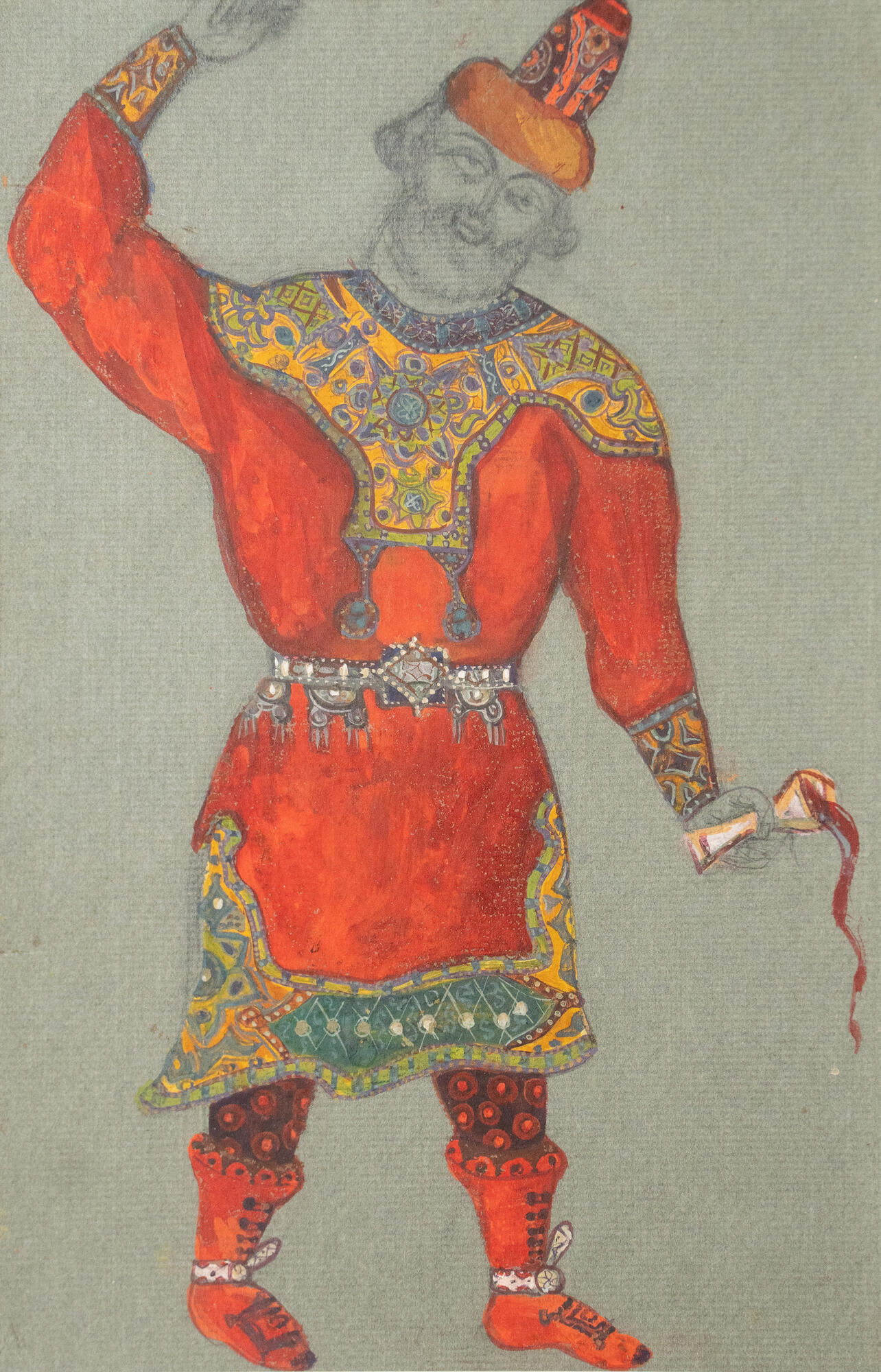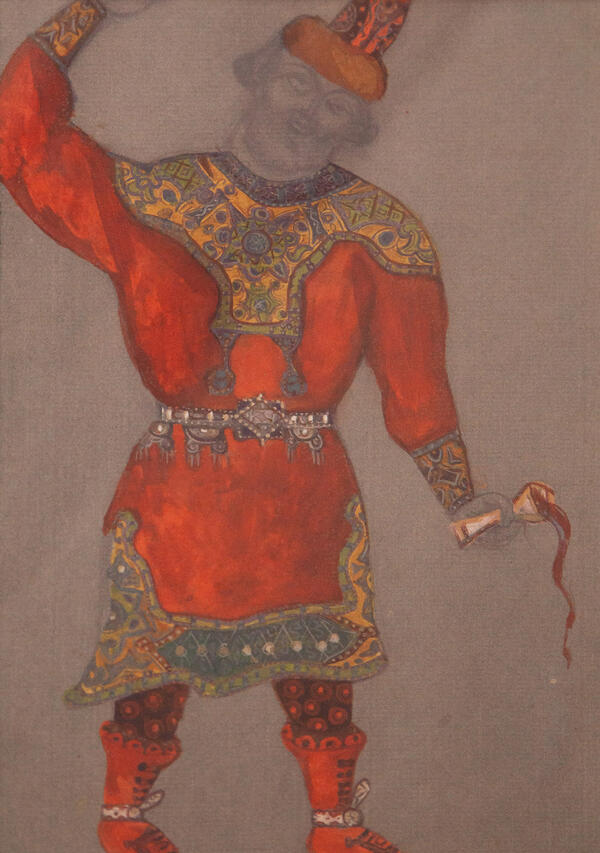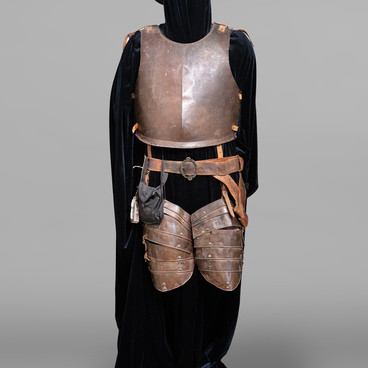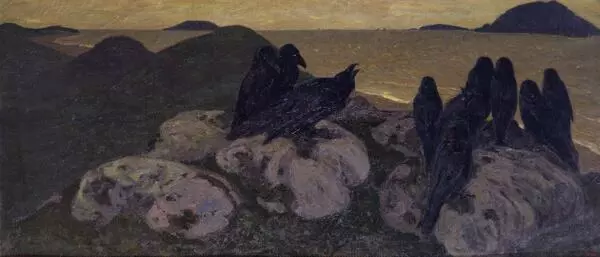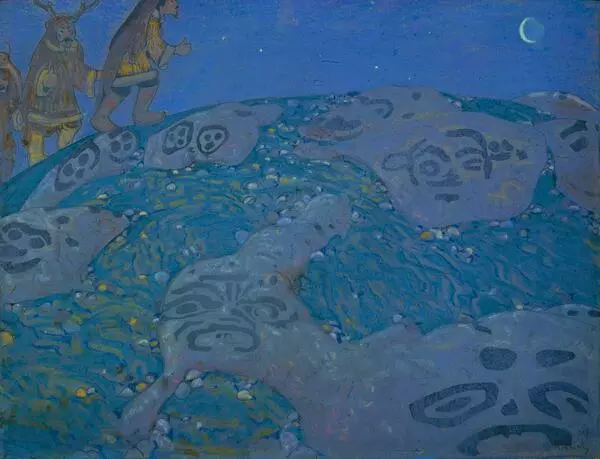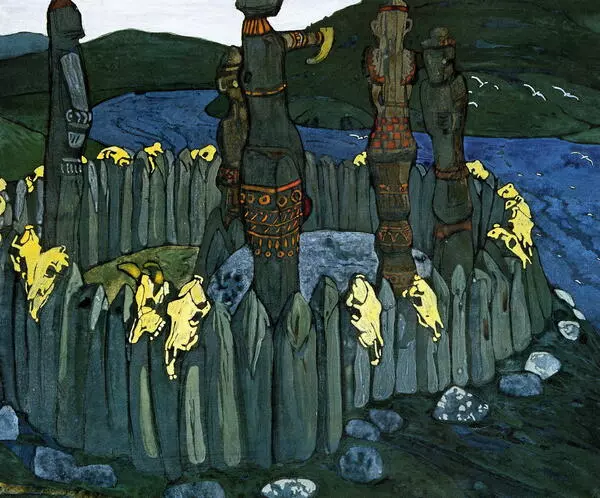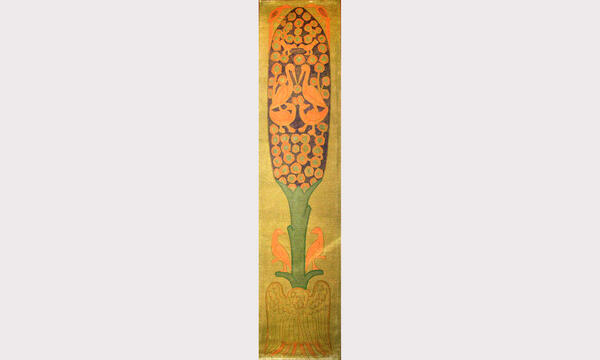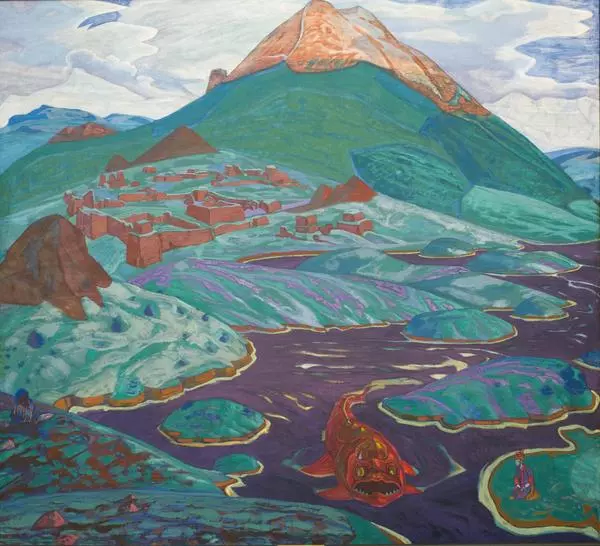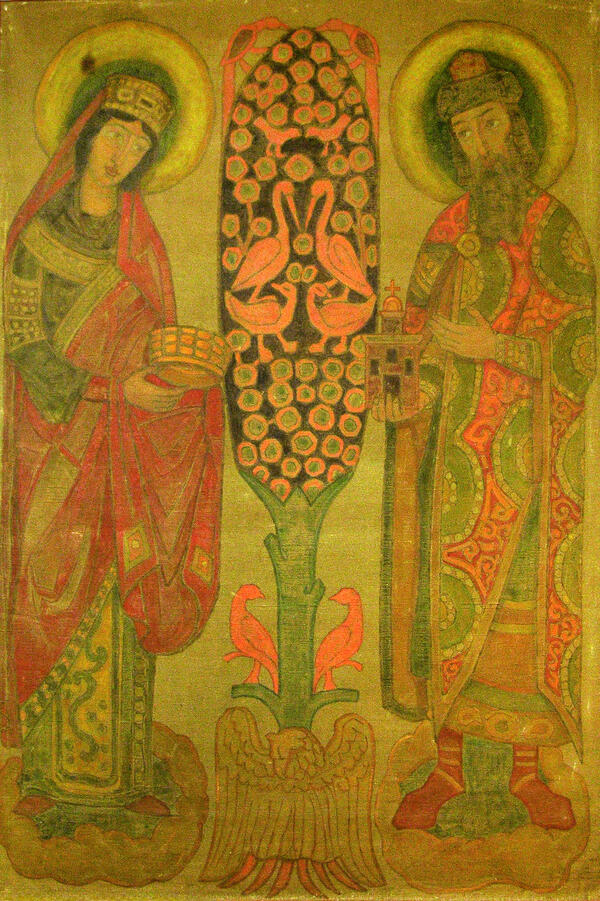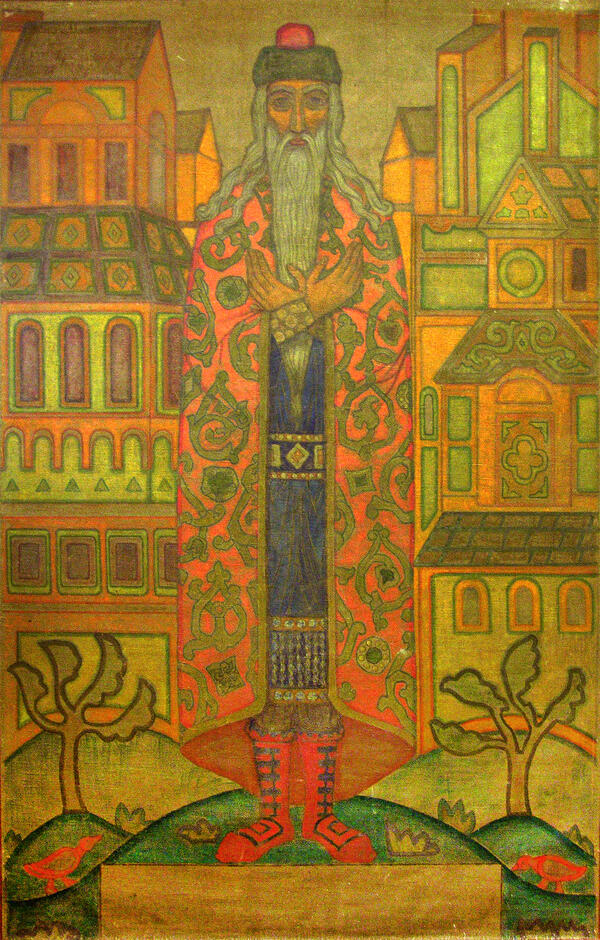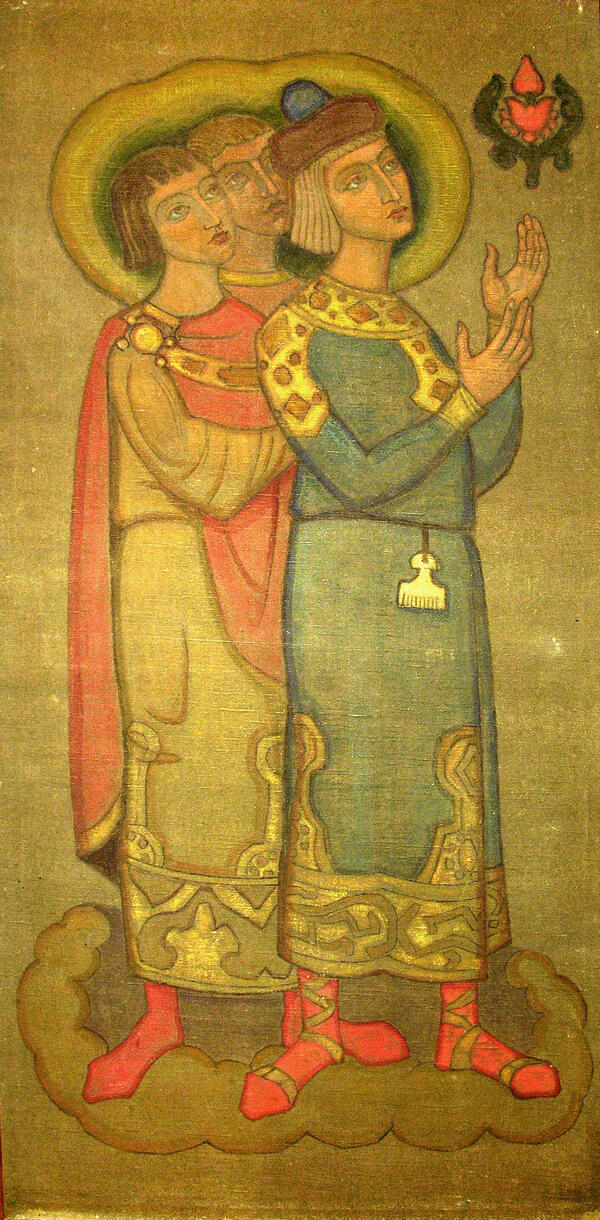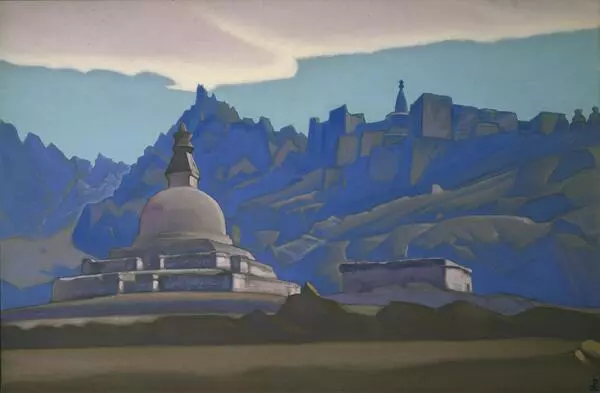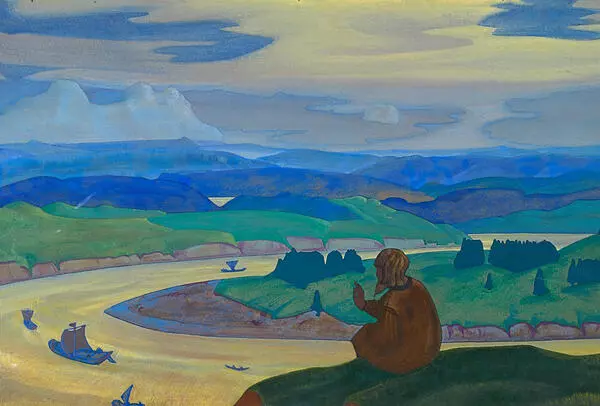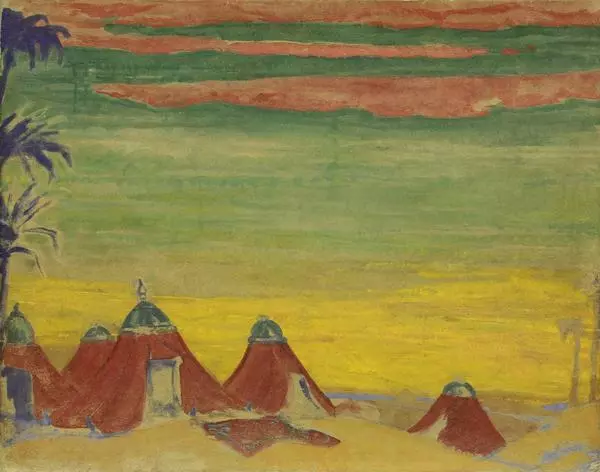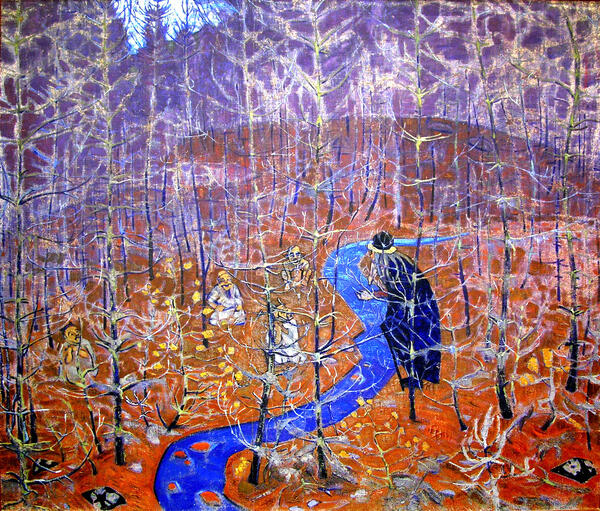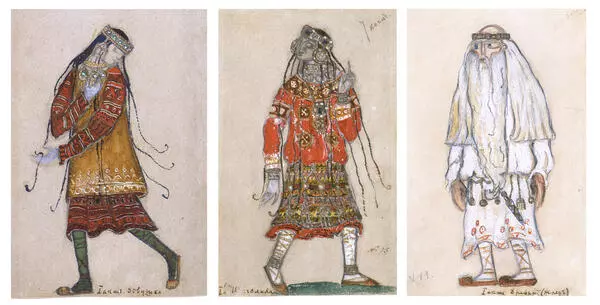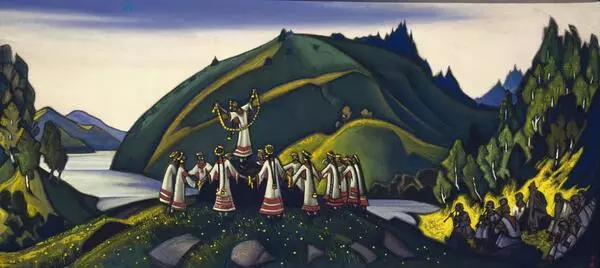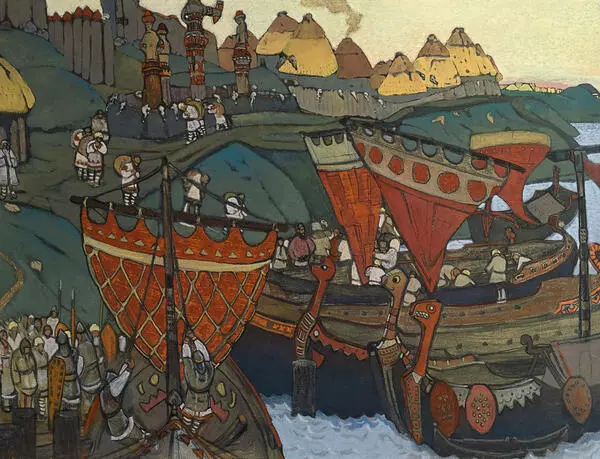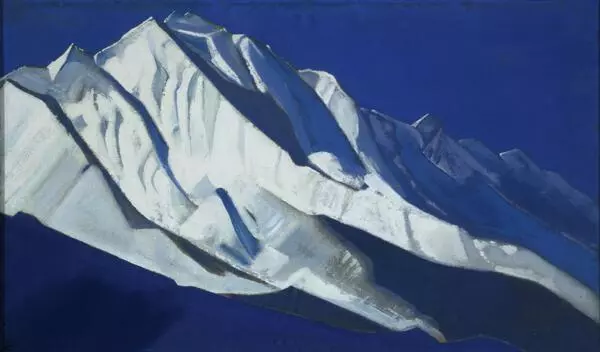Alexander Porfiryevich Borodin’s opera “Prince Igor” was an important part of Nicholas Konstantinovich Roerich’s artistic journey. It all began with Sergei Diaghilev’s Ballets Russes in Paris. Nicholas Roerich was asked to design two operas for the first seasons of 1908–1909: Nikolai Rimsky-Korsakov’s “The Maid of Pskov” and Alexander Borodin’s “Prince Igor”. He shared his thoughts on this with Moscow reporters,
Sketch of Vladimir Galitsky’s costume
Creation period
October 18, 1914
Place of сreation
London, England
Dimensions
23,5x16 cm
Technique
gouache, paper, cardboard
Collection
Exhibition
0
Open in app #2
#4
It seems that I am somehow destined to start everything from abroad. So, ‘Igor’ is the start.
#5
Even though Roerich had prepared sketches of the scenery and costumes for all four acts of the opera, the circumstances around the first season of the Ballets Russes led to his ideas being realized only in one part of the opera called “Polovtsian Dances and Suite”. Later, recalling the first season of the Ballets Russes, Nicholas Roerich wrote that he particularly remembered two things that happened during Diaghilev’s staging in Paris — his friendship with Sanin and Chaliapin’s gratitude for the costume for his role as Khan Konchak, “Chaliapin could pull it off, wearing the Scythian-Mongolian costume.”
The full version of the opera “Prince Igor” was performed in London, as part of the Grand Season of the Russian Opera and Ballet program in 1914–1915. This time it was a new stage adaptation by the director Alexander Sanin, who wanted to make the show “most expressive”, and, according to Sanin, Roerich managed the task perfectly.
The art historian Olga Rozhnova wrote,
The full version of the opera “Prince Igor” was performed in London, as part of the Grand Season of the Russian Opera and Ballet program in 1914–1915. This time it was a new stage adaptation by the director Alexander Sanin, who wanted to make the show “most expressive”, and, according to Sanin, Roerich managed the task perfectly.
The art historian Olga Rozhnova wrote,
#6
The sketch for the London production depicts Galitsky as a stocky, stylized figure. His movements — with his legs wide apart, his goblet of wine carelessly clutched in his one hand and his other hand raised in a reckless gesture of revelry — seem to resonate with a vibrant scarlet caftan embroidered with green, blue and yellow patterns on the chest. Foreign viewers recognized the style of primitivists and ornamentation of the ‘Russian Far East’ in this design. But the stunning success of this Chaliapin’s role was achieved not only through the breathtaking visual. Chaliapin rejected the conventional opera stereotypes, that circulated in Russian musical theaters, and embraced a new vision <…> Together with [Roerich], Feodor Ivanovich created sketches that helped him reveal the nature of his character. Chaliapin’s voice, his profound and powerful acting were a perfect match to Roerich’s large-scale colorful sets.
#3
Ministry of Culture of the Russian Federation
read morehide
00:00
00:00
1x
Sketch of Vladimir Galitsky’s costume
Creation period
October 18, 1914
Place of сreation
London, England
Dimensions
23,5x16 cm
Technique
gouache, paper, cardboard
Collection
Exhibition
0
Open in app
Share
